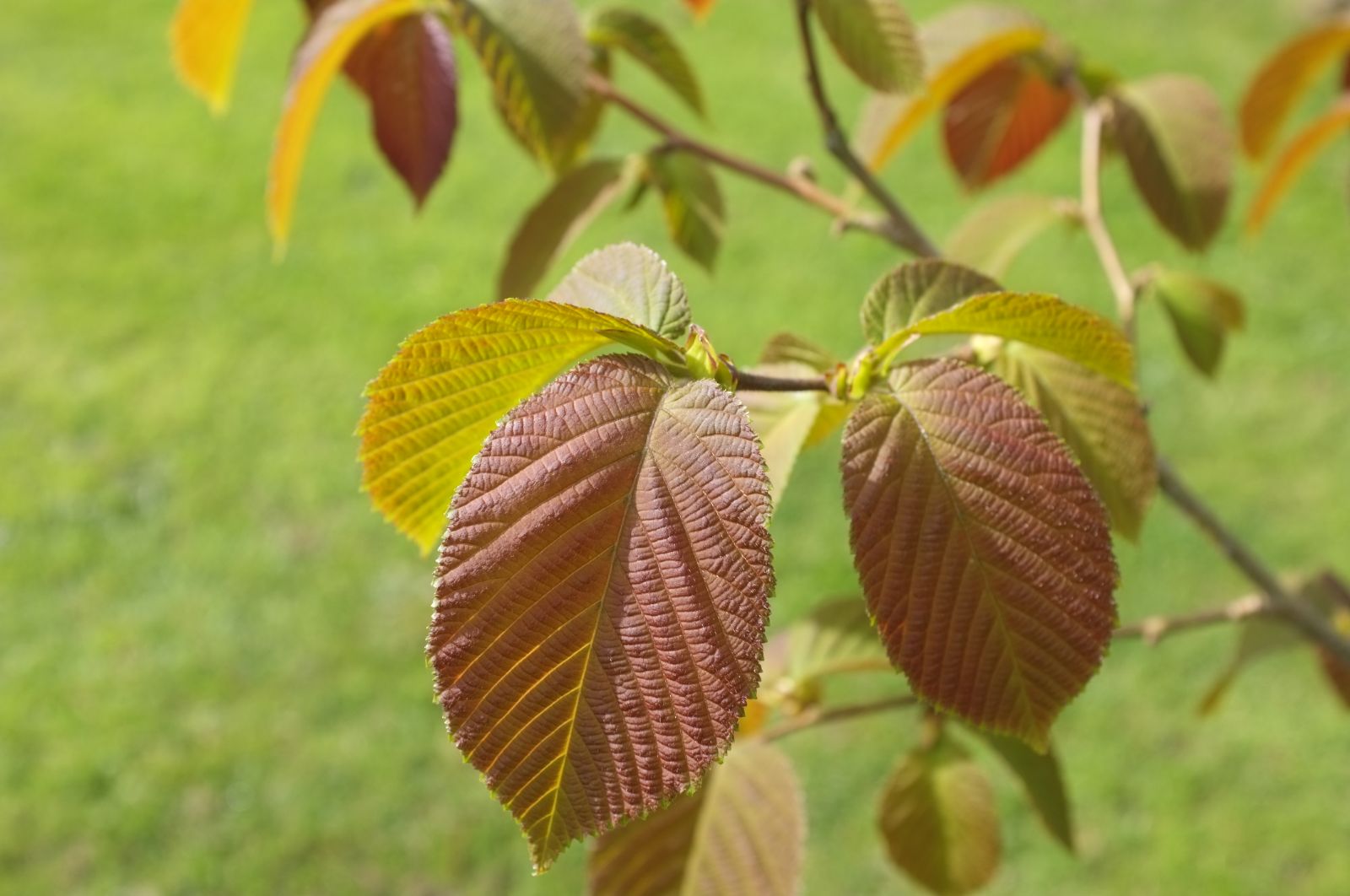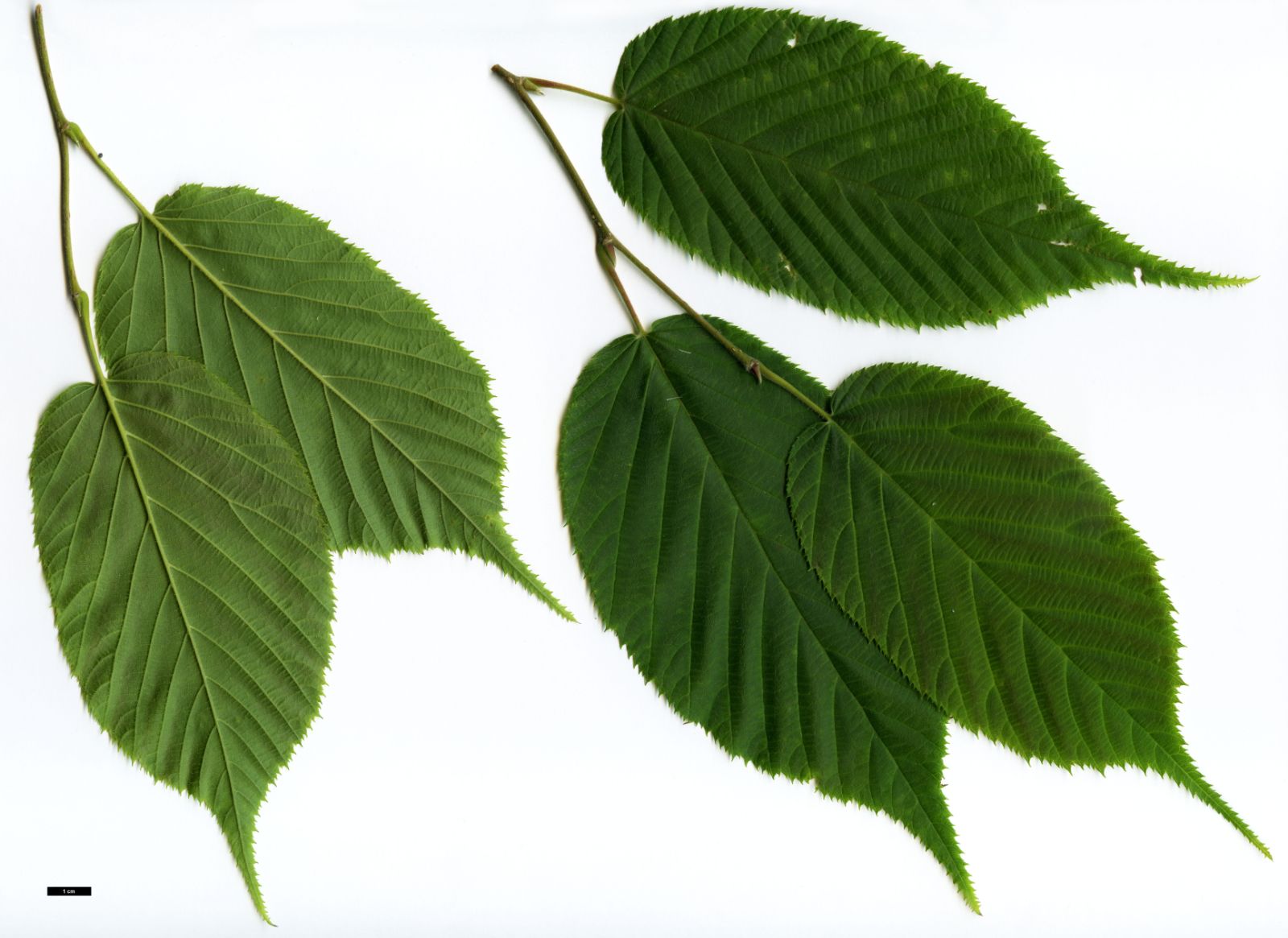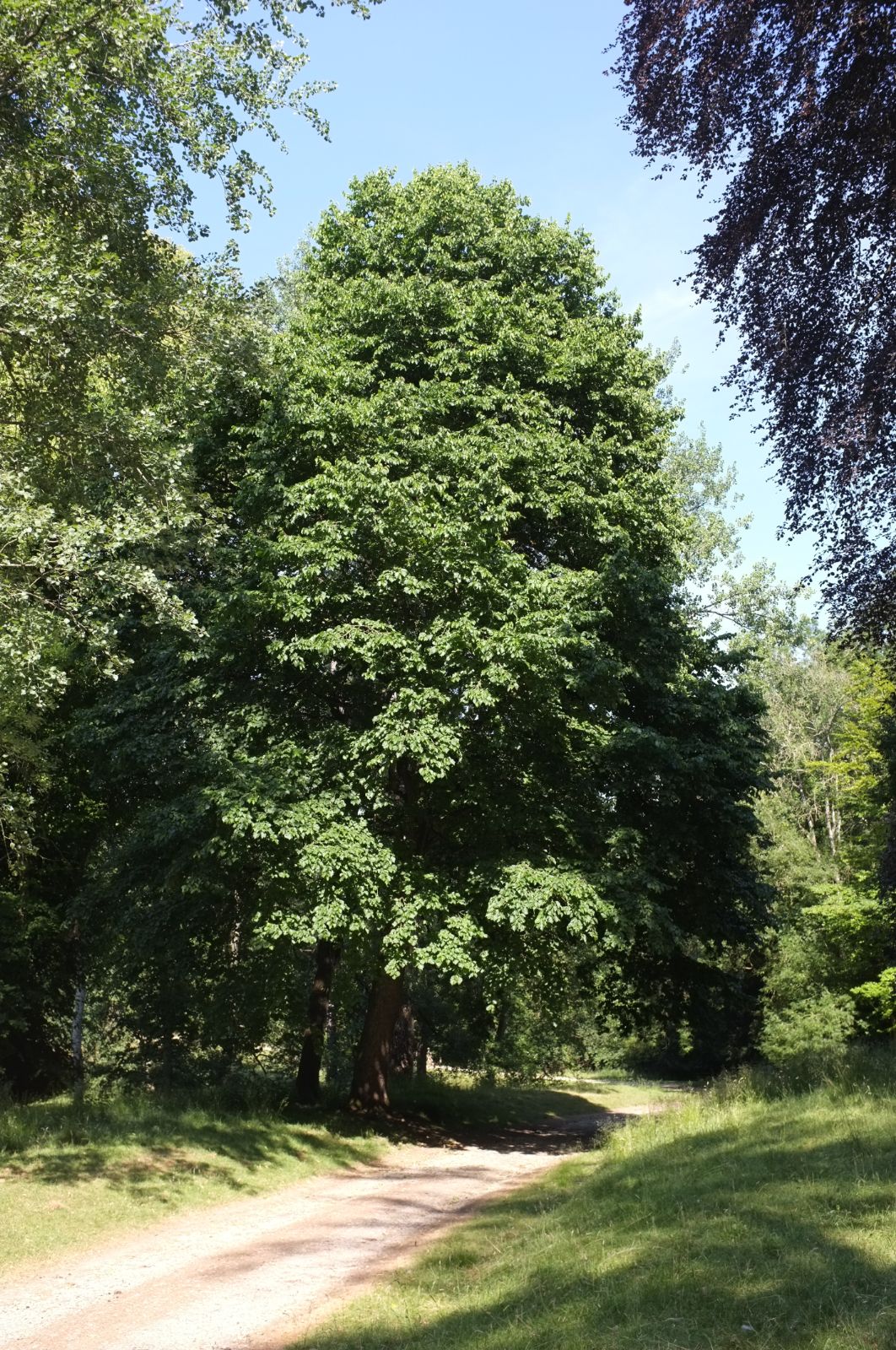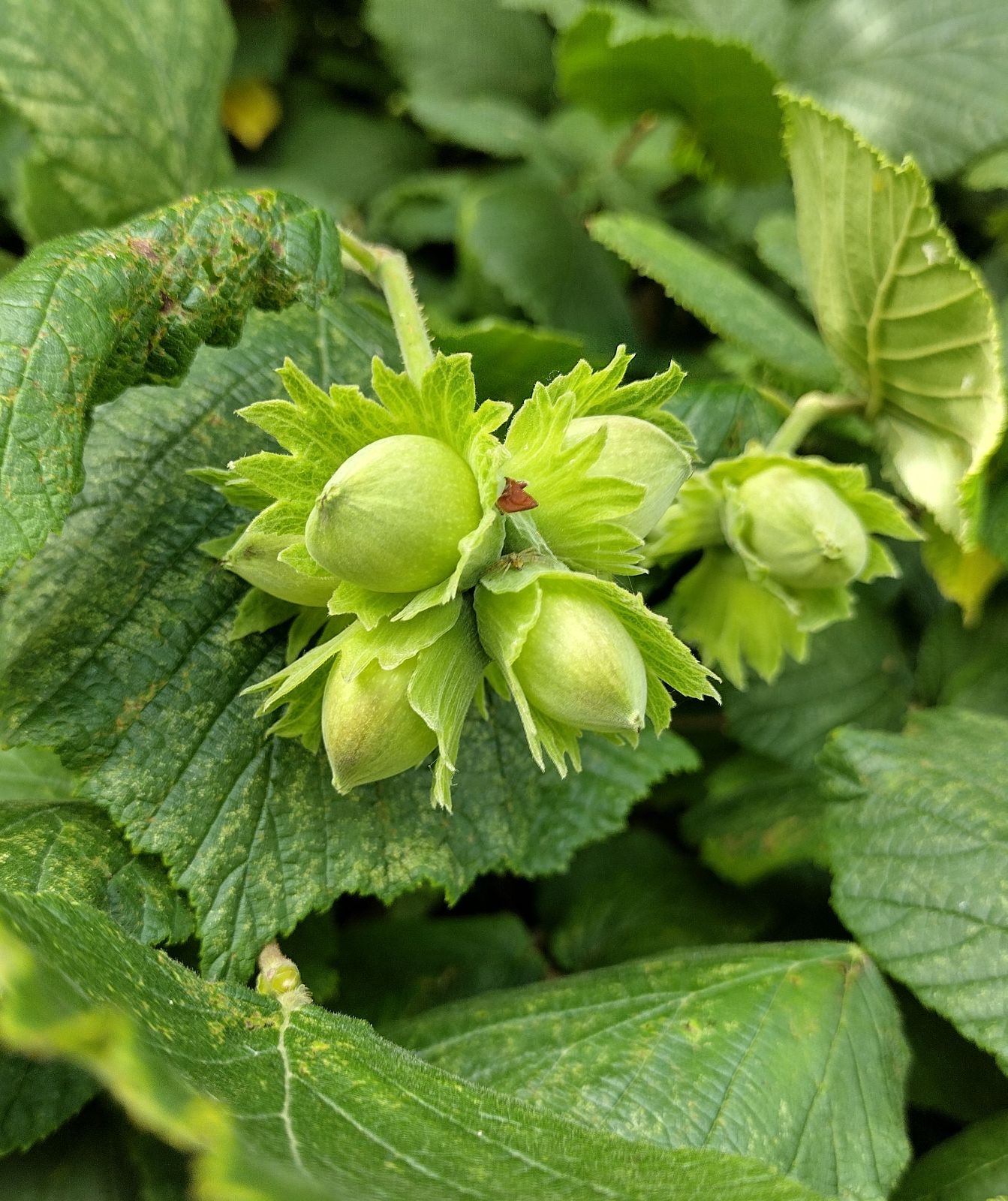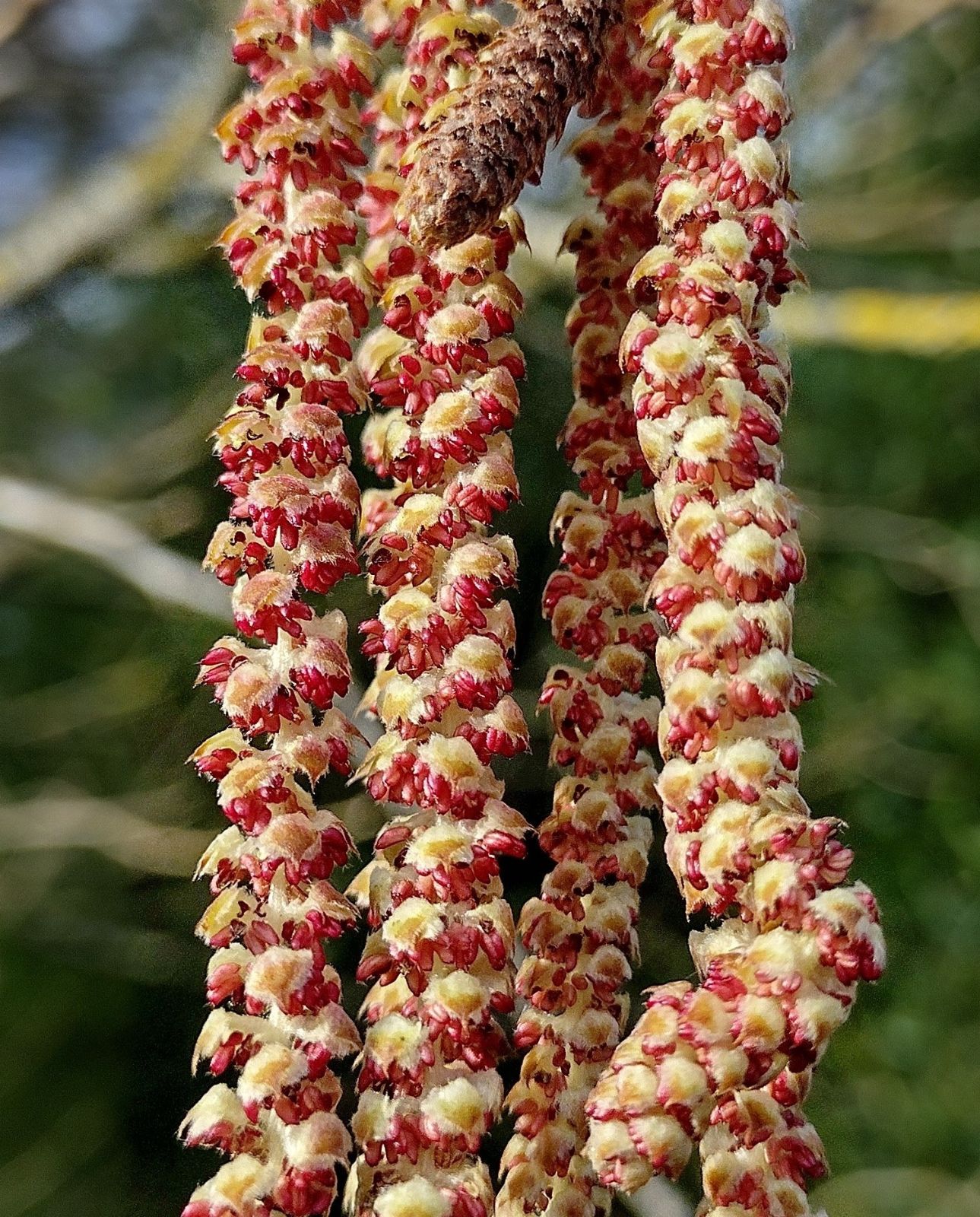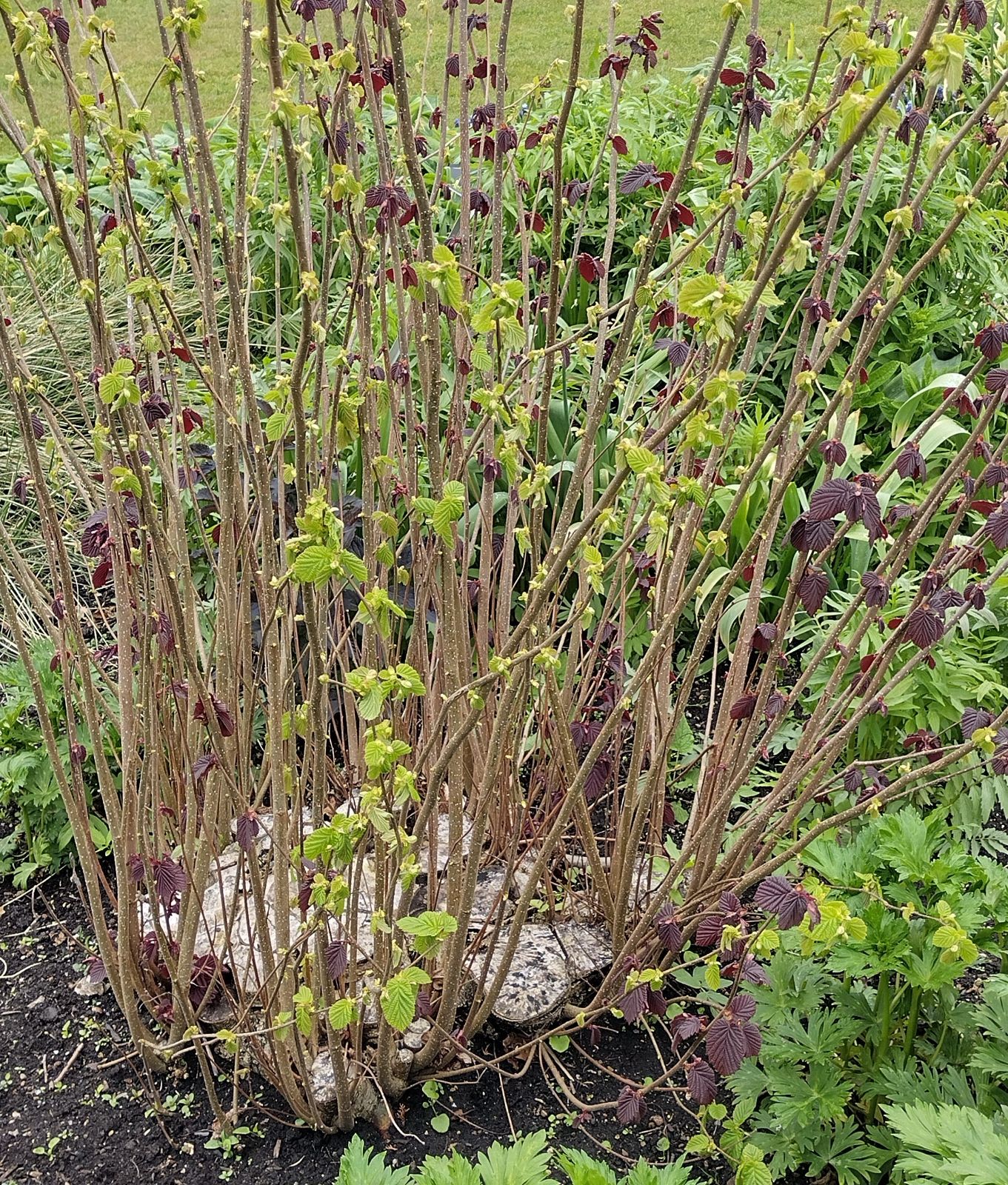Corylus
Sponsor
Kindly sponsored by
Kent Men of The Trees
Credits
Owen Johnson & Richard Moore (2023)
Recommended citation
Johnson, O. & Moore, R. (2023), 'Corylus' from the website Trees and Shrubs Online (treesandshrubsonline.
Family
- Betulaceae
Common Names
- Hazels
- Filberts
- 榛属 (zhen shu)
- Coudriers
- Hasel
Species in genus
- Corylus americana
- Corylus americana × avellana
- Corylus avellana
- Corylus avellana × cornuta
- Corylus avellana × heterophylla
- Corylus avellana × maxima
- Corylus avellana × sieboldiana
- Corylus avellana × sutchuenensis
- Corylus Badgersett Hybrids
- Corylus chinensis
- Corylus colchica
- Corylus colurna
- Corylus × colurnoides
- Corylus cornuta
- Corylus fargesii
- Corylus ferox
- Corylus 'Grand Traverse'
- Corylus heterophylla
- Corylus jacquemontii
- Corylus maxima
- Corylus 'Purple Haze'
- Corylus 'Rosita'
- Corylus 'Ruby'
- Corylus sieboldiana
- Corylus × spinescens
- Corylus sutchuenensis
- Corylus 'Te Terra Red'
- Corylus × vilmorinii
- Corylus yunnanensis
Deciduous trees or shrubs. Buds ovoid, obtuse with numerous imbricated scales. Young twig often with rather long, spreading, glandular hairs. Leaves alternate, with margins closely serrate or lobulate; stipules two, caducous; petiole short. Plants monoecious, wind pollinated. Male inflorescence subsessile, cylindrical, spicate-cymose, forming a pendulous catkin, produced in early autumn in fascicles of commonly between two and five from a single peduncle, extending and opening late winter to early summer; catkin composed of multiple imbricated bracts, each of which holds an individual flower formed of two partially adnate bracteoles; stamens 2–8, filaments bifurcate bearing two separate thecae, often with hairs at tip; perianth absent. Female flowers held in tight clusters within protective scales resembling leaf buds with red tipped styles protruding in late winter to summer, with calyx adnate to ovary, and with a small involucral structure at their base formed of two small bracteoles; ovules 1, or rarely 2 per locule; styles split into two branches from base. Fruits ovoid to subglobose one seeded nuts, longitudinally ribbed, agglomerated, hard-shelled when mature, held within or completely enclosed by conspicuous leafy involucral bracts; fruits ripening in late summer/early autumn. (Elwes & Henry 1906–1913; Kubitzki 1993; Furlow 1997; Li & Skvortsov 1999).
Introduction
The seventeen or so known species of hazel (Corylus) form a distinctive and close-knit group whose boundaries have not been challenged since Linnaeus described the genus in 1753. All of them bear nuts of varying size but excellent flavour, making the genus one of the world’s most important tree crops. All of them are wind-pollinated, and mature plants are always eyecatching for a few weeks when the long yellow to pinkish male catkins expand to shed their pollen; the female flowers, on the same plant, form clusters of ruby-red styles peeping from buds, but are so tiny that many observers will never notice them. Some hazels, such as the common European C. avellana L., are notable for flowering late in winter, while species from high mountains such as the southern Chinese C. yunnanensis (Franch.) A. Camus wait until early summer in their natural habitat.
Gardeners in Europe and North America are likely to be influenced, indeed prejudiced, by their familiarity with these continents’ native species, which in the case of Corylus are common and generally unspectacular bushes; Arthur Lee Jacobson, in his encyclopaedic North American Landscape Trees, defines the hazels’ ‘minor role as ornamental trees, partly because they are usually shrubby, partly because they are usually rather dull-looking’ (Jacobson 1996). Among ornamental selections, C. avellana ‘Contorta’ stands out alone as perhaps the most satisfying of those plants whose twigs and leaves twist and contort crazily. And yet, among the wild species, which in cultivation still tend to lurk in the largest gardens and collections, there is in fact plenty to confound our expectations of dullness. There are straight-stemmed trees reportedly 40 m tall in the wild (C. chinensis Franch.); there are plants with garish red many-spined fruit like robins’ pincushions (C. ferox Wall.). There are species with slenderer, rather hornbeam-like leaves which can flush with sunrise colours in the spring, and even one tree (C. fargesii (Franch.) C.K.Schneid.) whose bark peels in bronze and beige papery rolls, to rival some of the showiest birches.
This said, the majority of Corylus share enough of a genetic signature to make their identification a tricky business – and even one prone to disaster. The first introduction to a western garden, for example, of what was thought to be the birch-barked C. fargesii (McNamara 34) has since been re-identified as C. yunnanensis – an error which probably delayed appreciation among growers of the many excellent qualities of C. fargesii itself. The potentially giant C. chinensis can still be found in a few collections mislabelled as C. heterophylla Fisch. ex Trautv., a shrub which plants from SICH 1747 were first assumed to represent. Several other wild collections have languished for decades in the west as ‘Corylus sp.’, including H&M 2361 from Sichuan and GUIZ 4 from Guizhou (probably C. sutchuenensis (Franch.) Nakai).
The best feature with which to get a handle for identifying Corylus is undoubtedly the involucre or husk of the nut, the organ which seems to have given the group its ancient Greek name (korylos, from korys, a helmet), and its commonest English name (Old English hæsel: a cap or head-dress). In the European C. avellana, and in the commonest American hazel, C. americana Walter, this husk is a slightly residual feature which half-protects the mature nut, rather like the tissue-paper backing the oranges in a greengrocer’s display. By contract, the husks of the other American native species, C. cornuta Marshall, completely wrap the nut, ending in a narrow tube, and are furnished with fine, piercing prickles for further defence. The fiercely spiny husk of C. ferox is a rival development and recalls those of the genus Castanea, the sweet chestnuts, in a neat example of convergent evolution. In other hazels again, such as C. colurna L. from the Near East, the husk is not spiny but develops an elaborate Elizabethan ruff of leathery points which serves to make the unripe nut almost as hard to extract. When a hazelnut is ripe, it either drops free of the husk or the husk withers after both fall together, allowing access to small terrestrial mammals whose teeth are adapted to chiselling through the hard shell. Many of the nuts will be eaten, but for the hazel this is an acceptable price, since others will be transported considerable distances and buried, and occasionally forgotten about. Corylus is the only genus in the family Betulaceae to rely on animals rather than wind as the principle agency for transporting its seeds. The nuts are consequently the largest in the family, and can be packed with nutrients to give the germinating sapling maximum advantage.
These nuts and their husks are only available for identification on mature plants and then only for part of the year, and exotic hazels in cultivation can be particularly slow to flower. A vegetative key to the genus has been devised by Jan De Langhe and was published in the 2016 IDS Yearbook (De Langhe in Camelbeke & Aiello 2017); as of 2023 this resource was available (here). By necessity the key depends on subtle and sometimes hard-to-quantify features, such as the extent of lobing around the leaf and the proportions of glandular to non-glandular hairs on the twig. The key presented below is simpler and more conventional, but does rely on nuts being available for study.
Corylus as a genus is perhaps at the peak of its evolutionary success. Almost half of its species enjoy broad natural ranges, within which they are often among the most ubiquitous of woodland shrubs. None of the species are assessed by the IUCN as threatened except the little-known C. colchica Albov which appears confined to the western Caucasus mountains and is defined as Vulnerable (IUCN 2023), while some species endemic to China and the Himalayas are designated ‘data deficient’ and require further study (Holstein, Tamer & Weigend 2018).
Only one natural hybrid has been observed within the genus. Corylus × colurnoides Schneid. (avellana × colurna) was recorded in the Caucasus mountains in the 1930s by the Georgian botanist Liubov Kemularia-Nathadze, although this cross has not been reported from other regions where these two species are sympatric. When grown together in gardens however, hazels from different parts of the world tend to interbreed promiscuously.
Most hazels are generalists, able to exploit a range of conditions and any reasonable soil. Among their pests and diseases, much the most significant is Eastern Filbert Blight (EFB), caused by the fungus Anisogramma anomala; its spores are spread during winter rainstorms and usually enter the plants through their terminal buds (Wikipedia 2023). The natural host species is C. americana from eastern North America, with which the fungus has evolved to exist in harmony, causing just small cankers; the other hazel native to the same region, C. cornuta, also displays a high degree of immunity. The Old World hazels are variously susceptible to EFB, with C. avellana in particular liable to retrench and die within a few years of infection. EFB was accidentally introduced to the hazelnut growing areas of the western United States around 1960 (Muehlbauer, Capik & Molnar 2021), but has not yet spread beyond North America – where the host C. americana, if present at all, remains a very rare cultivated plant.
Hazels are easy to raise from seed, but individuals are seldom self-fertile (the fruiting selection Corylus americana ‘Winkler’ being one notable exception). As an additional method to avoid self-fertilisation, individual hazel plants may also stagger their flowering times to an unusual degree (OJ pers. obs.); a strategy that may be seen in action in just about any population of C. avellana in Europe in very early spring each year. This means that nut orchards of a single clone need at least one different kind nearby in order to bear fruit. (Another curious feature of the genus, which can limit nut production, is that although the pollen germinates as soon as it touches the female flower in early spring, fertilisation only occurs several months later, by which time some of the pollen will have perished (Crawford 2016): a percentage of hazelnuts consequently turns out to be empty.) Those hazel species which grow as understorey shrubs can also be propagated by layering: they are used to their branches getting pinned under falling canopy trees, and where their bark remains in contact with moist ground, roots readily form and new shoots grow up. The downside of this facility is that the genus as a whole is unusually hard to propagate from cuttings. Fruiting clones and garden sports are usually sold as grafts, but the easiest rootstocks to raise – notably C. avellana and C. americana – both continually grow new sprouts from the root-collar. Hazelnut breeders have consequently been interested in developing new rootstocks, as well as new crop selections; no graft incompatabilities have been noted within the genus.
Hazel breeding
The curator of a botanic garden will naturally be interested in growing plants as they are found in the wild; horticulturists will take interest in artificial or accidental hybrids only if these happen to introduce new ornamantal features, rather than merely diluting the attractive qualities of either parent. But for the farmer, crossing different stocks is a natural means of developing improved selections which can show ‘hybrid vigour’. Corylus is one of very few tree genera in which wild species and ornamental clones are vastly outnumbered by the range of plants bred for nut production, and many of these clones have a complex ancestry. This account of the fruiting hazels does not aspire to be exhaustive; in any case, this is a fast-developing industry. But the varied interspecific hybrids are by their very existence of some botanical interest, while the cultural role that fruiting hazels have played around the temperate world is not a subject to glide over.
Very few of these hazel hybrids have acquired their own botanical names. One section of the old European fruiting hazels which has long interested taxonomists comprises those which resemble C. avellana but whose husks are longer and extend well beyond the tip of the nut; see the treatment of C. maxima Mill., below, for a discussion of this group, whose origins are lost in the mists of time. The fruiting selections derived from one or both of these taxa are all grouped here, purely for convenience, under the heading C. avellana × maxima. In this article, simple interspecific hybrids are listed in the parent species’ alphabetical order (even when the first of these is known to have been the pollen parent); to avoid a plethora of entries for minor clones, those of more complex parentage are generally treated as cultivars of whatever parent (or hybrid parent) appears most dominant.
The most thorough studies in hazel hybridisation have been carried out at the Department of Horticuture of Oregon State University at Corvallis. The Willamette Valley in Oregon became the heartland of hazelnut production in the United States, but the arrival of Eastern Filbert Blight in this area after 1960 led to considerable management costs and the loss of whole orchards, all of which relied on clones bred from the European Corylus avellana (primarily ‘Barcelona’) that proved to be highly susceptible to EFB (Muehlbauer, Capik & Molnar 2021). During the last years of the twentieth century, Veli Erdogan and Shawn Mehlenbacher at Corvallis experimentally crossed nine Corylus taxa – C. americana, C. avellana, C. chinensis, C. colurna, C. cornuta and its subsp. californica (A. DC.) A.E. Murray, C. heterophylla, C. sutchuensis, and C. sieboldiana Blume, perhaps in its var. mandshurica (Maxim.) C.K. Schneider – in every possible way. Amost all of these crosses were successful to some degree, though many of the resulting plants have not been investigated further for their potential in nut production. Today, the vast majority of commercial fruiting clones have C. avellana somewhere in their ancestry.
Silviculture
Hazelnuts have become the world’s third most important true nut crop, after walnuts and almonds (Saveleva et al. 2021). In comparison with pears or strawberries, the cultivated plants differ only subtly from the ancestral wild species; until the 1980s hazelnut production in China depended almost entirely on unselected plants of native Corylus heterophylla (Li & Skvortsov 1999; Molnar 2011). As of 2021, Turkey accounted for 70% of the world’s million tonne annual hazelnut harvest (Saveleva et al. 2021); the other leading producers are Italy, Azerbaijan, China, the United States and Spain (WWF 2021). A quarter of the total crop currently goes to the Ferrero Group for the production of Nutella® hazelnut spread (University of Missouri Integrated Pest Management 2022). Modern commercial hazel orchards are often harvested by machine; the ground is kept bare so that fallen nuts can be sucked up. To allow access, the fruiting plants – nearly all of them derived from naturally bushy species – are trained to a single stem, or sometimes managed as a series of hedges. In Spain and Italy at least, summer irrigation is needed (Crawford 2016).
Around the Mediterranean, nut production still depends of selections which have been bred over thousands of years from the local flora (C. avellana, and a range of potential taxa with longer husks). In Turkey, where hazelnuts are the country’s largest agricultural export (Helmstetter et al. 2020), the leading clones are ‘Tombul’, ‘Palaz’ and ‘Foşa’; the principle selections in Italy are ‘Tonda Gentile delle Langhe’, ‘Tonda Gentile Romana’, ‘Tonda di Giffoni’, ‘Mortarella’, and ‘San Giovanni’, while ‘Negret’ dominates production in Spain (Muehlbauer, Capik & Molnar 2021). Further east, in the Caucasus Mountains, traditional hazel growing in Azerbaijan produces an annual harvest of nearly 60,000 tonnes (WWF 2021). In Georgia, there were 5800 ha of hazel orchards in 2005, with a rapid expansion planned (Mirotadze 2005).
In northern Europe, hazelnut production remains more of a cottage industry, carried out wherever conditions are warm and sunny enough and soils are reasonably fertile. In the UK, nuts are produced commercially on a tiny scale in Kent, a circumstance which helped inspire the generous sponsorship by the Kent Men of the Trees of this revision of the genus. A century ago, more than 3000 ha of the county were devoted to hazelnut orchards, primarily of the clone ‘Kentish Cob’; the trees were often underplanted with gooseberries and currants, or the orchards were grazed by sheep. Today, less than 100 ha remain (Crawford 2016).
Fruting hazels bred in Europe from Corylus avellana (and other taxa) were introduced to China at the beginning of the nineteenth century (Xie et al. 2005), but it was not until 1980 that systematic efforts began to hybridise some of these with the leading native species used for nut production, C. heterophylla, which is a hardier plant. In 2010, the first 1200 ha of orchards in northern China were planted with selected hybrid clones (Molnar 2011); by 2016 this had risen to 50,000 ha (Wang et al. 2018). A comparable breeding programme has run in South Korea since 1975 (Molnar 2011).
Much like Corylus heterophylla, the hazel species native to North America, C. americana and C. cornuta, are hardier than nut trees bred from European stock, but their nuts are smaller and, in the case of C. cornuta, are held in thicker shells. These factors, along in particular with the presence of Eastern Filbert Blight, have combined to encourage the United States and Canada to become the most innovative nations in the search for improved hazel hybrids. The success of various clones raised at Oregon State University, many deriving from C. americana as well as from European selections, has led to a doubling of the area in that State devoted to hazelnut production, reaching more than 30,000 ha by 2020 (Muehlbauer, Capik & Molnar 2021) and accounting for 95% of the United States’ hazelnut crop (University of Missouri Integrated Pest Management 2022). There is no native population of C. americana in Oregon to act as a constant reservoir for EFB infection; in the eastern United States, where C. americana is indigenous, a smaller-scale hazelnut industry has depended on breeding clones which are even more reliably EFB resistant. In New England and in eastern Canada, the genes of C. cornuta and C. heterophylla have been utilised to breed complex hybrids which are especially cold tolerant (Muehlbauer, Capik & Molnar 2021).
Other countries in which commercial hazelnut production is carried out on a smaller scale include Australia (Baldwin, Gilchrist & Snare 2005) and Chile (Bastias & Grau 2005).
The traditional methods of layering and of harvesting suckers remain the most practical techniques for propagating Corylus. However, hazels can take many years from seed before they begin to fruit regularly (Rahemi, Taghavi & Dale 2016; Lagerstedt 1979). Grafting ensures earlier fruit production and a plant with a stable taproot (Hartmann et al. 2014); C. colurna is important as a non-suckering and drought-resistant rootstock, but its seed can take at least two years to germinate, and the seedlings typically require another two years before they are well enough established to be used as stocks (Cerović et al. 2009; Rovira 2021; Bijelić et al. 2021). The related C. chinensis may come to be preferred in this role, since seedlings develop a fibrous root-system more quickly (Molnar 2011; Rovira 2021); this species is also easier to cross with C. avellana in the search for non-suckering, fruiting plants (Erdogan & Mehlenbacher 2000).
Grafting techniques include whip-and-tongue, cleft- and side-grafts, which are traditionally performed in mid-winter with a hot-pipe callusing system used to accelerate healing, since hazels are notoriously slow to callus (Lagerstedt 1979; Hartmann et al. 2014). More recently the technique of hypocotyl grafting has shown superior results (Rahemi, Taghavi & Dale 2016). Grafting onto C. colurna rootstocks can also be performed successfully in spring using the whip-and-tongue method, and in June using chip-budding (Cerović et al. 2009).
Hazels are difficult to propagate by cuttings, since although new roots form readily enough, the leaf-buds often drop off (Lagerstedt 1979). Semi-ripe cuttings taken from mid-June to mid-July are the likeliest to survive, and should be around 15 cm long; the soft tip should be removed along with the leaves along the lower two thirds of the shoot, leaving two or three at the top which can be halved if too large. The freshly cut base of the cutting should be dipped in a rooting hormone with a low concentration of IBA (no more than 500 mg L−1: use of rooting hormones with concentrations of IBA 1000 mg and above results in bud abscission (Markovski, Arsov & Gjamovski 2016; Hudson et al. 2022). The presence of putrescine also significantly helps cuttings (Cristofori, Rouphael & Rugini 2010). The cuttings should be kept in a humid environment until well rooted, ideally with mist and provided with bottom heat, slowly weaning them into a less humid environment once rooted and pricked out.
Hardwood cuttings can also be taken in November; storing and chilling them in a cold store for a month seems to helps mature the buds (Smith & Wareing 1972). These cuttings should be about 30 cm long, and dipped in low concentration IBA rooting hormone before inserting them into a free draining substrate such as sand. They should be kept in an environment where they will not dry out during the growing season, covering them if necessary whilst in growth, and they should be left until the following autumn before potting up (Markovski, Arsov & Gjamovski 2016).
Hazels are easy to propagate from seed, although if pure species are required it is important to ensure that seed has either been wild collected or control pollinated. Ripe nuts (with hard, woody shells) should be cold stratified for around two to six months in a fridge, or left outside in a cold frame over winter – with protection against rodents – before sowing in a general-purpose seed compost (Hartmann et al. 2014).
Tissue culture can allow the mass production of disease free, clonal material for both cultivars and rootstocks. Due to issues with contamination and weaning on, this technique is not yet carried out on a large scale, but research continues into its development (Yu & Reed 1995; Bacchetta et al. 2008; Kosenko et al. 2009; Mardini, Khadivi & Vatanpour-Azghandi 2020).
Except in North America, where Eastern Filbert Blight is endemic, hazels tend to suffer from few significant diseases. Powdery mildews (largely Phyllactinia guttata) commonly affect the foliage, reducing plants’ vigour in serious cases but rarely proving fatal; good air flow helps prevent infection (Buczacki & Harris 2000). The most serious bacterial disease is Xanthomonas arboricola var. corylina, leading to foliage death, bud abortion and dark green lesions on the bark which turn reddish-brown and which may girdle and kill branches, or the whole plant (Pscheidt & Ocamb 2022). This canker is prevalent in North America and Europe but only one case has so far been recorded in the UK (DEFRA 2014).
Hazel foliage is vulnerable to browsing by deer and rabbits, and new plants generally need some protection. Many hazels – Corylus avellana among them – are woodland species whose thin young bark is poorly adapted at preventing sunscald when they are grown in the open (Lagerstedt 1979); in hot sun, the bark may be coated in a reflective paint. Aphids and scale insects can distort young new growth; hazelnut weevils (Curculio nucum) and hazelnut gall mites (Phytoptus avellanae) can greatly damage fruit crops if not controlled (Buczacki & Harris 2000; OrCal 2022). In Britain, the introduced North American grey squirrel (Sciurus carolinensis) is a serious pest, stripping whole trees of their nuts before they ripen.
Taxonomy
Within the order Fagales, the genera closest to Corylus are Carpinus (the hornbeams), Ostrya (hop-hornbeams) and Ostryopsis. These genera used to be placed in their own family, Corylaceae, but genetic evidence has encouraged their submersion as a subfamily of the Betulaceae, which also includes the genera Alnus (the alders) and Betula (birches) together in a second subfamily (Camelbeke & Aiello 2017). In addition to its unique fruit morphology, Corylus is the only genus in the Betulaceae with bifurcate (divided) stamen filaments, holding two separate thecae and greatly aiding wind dispersal of the catkins’ pollen.
Corylus itself can be subdivided into two subgenera, Corylus and Acanthochlamys, with the latter containing C. ferox and C.wangii. Subgenus Corylus can be subdivided in turn into three subsections, distinguishing the arborescent species (subsection Colurnae), the species with sock-like nut husks (subsection Siphonochlamys, meaning ‘tubular leaf’), and the species with bell-shaped husks (subsection Phyllochlamys: ‘cloaked leaf’; sometimes also called subsection Corylus) (Forest & Bruneau 2000; Erdogan & Mehlenbacher 2000; Whitcher & Wen 2001; Holstein, Tamer & Weigend 2018; Yang et al. 2018; Helmstetter, Buggs & Lucas 2019).
Molecular and fossil evidence suggests that hazels evolved in Asia very early in the Tertiary (Zhao et al. 2020) and spread from there into Europe and across the Bering land bridge into North America (Whitcher & Wen 2001; Helmstetter, Buggs & Lucas 2019); China remains the genus’ heartland and several of today’s species are endemic to mainland east Asia, including the ‘primitive’ C. ferox and C. wangii (Erdogan & Mehlenbacher 2000; Whitcher & Wen 2001; Yang et al. 2018; Helmstetter, Buggs & Lucas 2019).
Corylus species not in cultivation
This account focuses on species and cultivars known to be growing in Europe and North America, and consequently excludes three Chinese endemics with localised natural ranges. Among these, the distinctive Corylus wangii is confined to the Weixi Xian mountains in north-west Yunnan (Li & Skvortsov 1999; Erdogan & Mehlenbacher 2000). C. potaninii was described by Yevgeni Bobrov in 1936 from Hubei, Yunnan and Guizhou (Holstein, Tamer & Weigend 2018); this taxon is accepted by Plants of the World Online (Royal Botanic Gardens, Kew 2023), whose nomenclature is in general followed in this account, but its relationship to C. sutchuenensis (C. heterophylla var. sutchuenensis in POWO nomenclature) remains unclear (Holstein, Tamer & Weigend 2018). Also accepted by POWO is C. wulingensis, described from Hunan by Q.X. Lui and C.M. Zhang in 1990 as a shrub intermediate between C. heterophylla and C. sutchuenensis (Royal Botanic Gardens, Kew 2023). The Vulnerable C. colchica is – arguably – a European endemic since its natural range lies in the western Caucasus mountains. It gains an entry here, even though we have found no good evidence for its cultivation west of Georgia.



